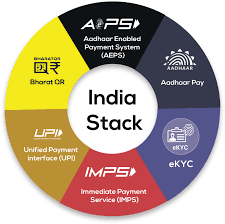Bima Sugam | 25 Sep 2023
Why in News?
Recently, the Insurance Regulatory and Development Authority of India (IRDAI) has formed a steering committee to act as the apex decision-making body for the creation of its ambitious ‘Bima Sugam’ online platform.
- IRDAI says Bima Sugam is an electronic marketplace protocol which would universalise and democratize insurance. This protocol will be connected with India Stack.
What is Bima Sugam?
- About:
- It’s an online platform where customers can choose a suitable scheme from multiple options given by various companies.
- All insurance requirements, including those for life, health, and general insurance (including motor and travel) will be met by Bima Sugam.
- Features:
- It will simplify and digitize the insurance marketplace— right from buying policies, to renewals, claim settlement, and agent and policy portability.
- It will assist consumers with all insurance related queries.
- Role:
- The proposed platform would act as a single window for the policyholder to manage his/her insurance coverage.
- It will provide end-to-end solutions for customers’ insurance needs i.e., purchase, service, and settlement.
- Utility:
- It will facilitate insurance companies to access the validated and authentic data from various touch points on a real-time basis.
- The platform will interface for the intermediaries and agents to sell policies and provide services to policyholders, among others, and reduce paperwork.
- Stakeholders:
- Life insurance and general insurance companies will own a 47.5% stake each, while brokers and agent bodies will own 2.5% each in Bima Sugam Platform.
What is IRDAI?
- IRDAI, founded in 1999, is a regulatory body created with the aim of protecting the interests of insurance customers.
- It is a statutory body under the IRDA Act 1999 and is under the jurisdiction of the Ministry of Finance.
- It regulates and sees to the development of the insurance industry while monitoring insurance-related activities.
- The powers and functions of the Authority are laid down in the IRDAI Act, 1999 and Insurance Act, 1938.
What is India Stack?
- About:
- India Stack is a set of APIs (Application programming interface) that allows governments, businesses, startups and developers to utilize a unique digital Infrastructure to solve India’s hard problems towards presence-less, paperless, and cashless service delivery.
- It aims to unlock the economic primitives of identity, data, and payments at population scale.
- Features:
- Digital transactions through India Stack often have lower transaction costs compared to traditional methods. This benefits businesses, consumers, and the government by reducing the cost of conducting various transactions.
- Bridging the wealth gaps and building an efficient and resilient digital economy that drives economic growth and social development.
- Components:
- The key components of INDIA STACK include Aadhaar (unique biometric-based identification system), Unified Payments Interface (UPI) for instant digital payments, and Digital Locker for secure storage of personal documents.
UPSC Civil Services Examination Previous Year’s Question (PYQs)
Prelims:
Q. Consider the following statements: (2018)
- Aadhaar card can be used as a proof of citizenship or domicile.
- Once issued, Aadhaar number cannot be deactivated or omitted by the Issuing Authority.
Which of the statements given above is/are correct?
(a) 1 only
(b) 2 only
(c) Both 1 and 2
(d) Neither 1 nor 2
Ans: (d)
Exp:
- The Aadhaar platform helps service providers authenticate identity of residents electronically, in a safe and quick manner, making service delivery more cost effective and efficient. According to the GoI and UIDAI, Aadhaar is not proof of citizenship.
- However, UIDAI has also published a set of contingencies when the Aadhaar issued by it is liable for rejection. An Aadhaar with mixed or anomalous biometric information or multiple names in a single name (like Urf or Alias) can be deactivated. Aadhaar can also get deactivated upon non-usage of the same for three consecutive years.

